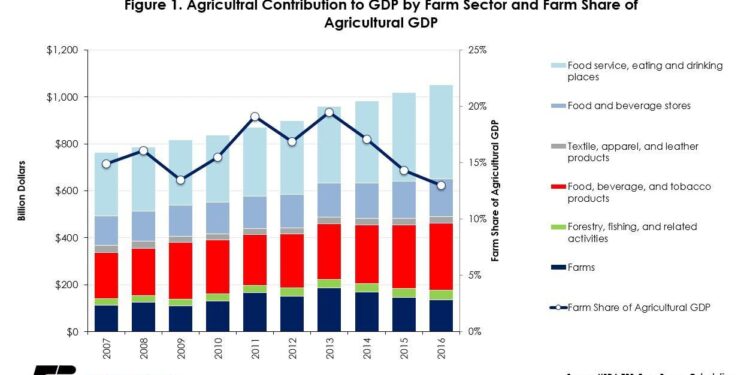Overview:
The agricultural landscape in the United States is undergoing significant changes as it confronts the ramifications of a shifting trade environment. The tariffs enacted during the Trump administration are increasingly impacting farmers nationwide, leading to financial challenges stemming from retaliatory measures by key trading partners. This situation has created a domino effect on commodity prices, export levels, and overall farm profitability. In this article, we delve into the early indicators of distress within the farming sector, examining how these tariffs are altering agricultural dynamics and what implications they may hold for farmers moving forward. With mounting pressures from both domestic and global markets, American agriculture faces an uncertain future as it navigates complex trade policies and their effects on rural communities.
Effects of Tariffs on Agricultural Prices and Farmers’ Earnings
The introduction of tariffs has significantly disrupted the agricultural industry, causing notable variations in crop prices that directly affect farmers’ earnings. These tariffs have led to increased expenses for essential materials and machinery, which in turn impacts crop pricing strategies. Farmers who depend heavily on exports are finding their markets limited as international buyers look for alternatives to avoid additional costs associated with these tariffs. This trend is particularly pronounced among crops that are primarily exported, resulting in a growing disparity between domestic prices and those abroad.
The repercussions extend beyond immediate market fluctuations; as crop values stabilize at lower rates, many farmers face shrinking profit margins. Consequently, numerous producers are reevaluating their planting decisions with an emphasis on sustainability rather than mere expansion. A renewed focus is emerging around local markets and alternative revenue sources. For instance, consider this updated table showcasing shifts in selected crop prices over the last fiscal year:
| Crop | Price Prior to Tariffs | Price Following Tariffs | Percentage Change |
|---|---|---|---|
| Soybeans | $10.50/bushel | $8.20/bushel | -21% |
| Corn | $4.00/bushel | $3.30/bushel | -17.5% |
| Wheat | $5 .40 /bushel | $4 .80 /bushel | -11 % < / tr > < / tbody > < / table > Long-Term Implications for Trade Dynamics and Market StabilityThe implementation of tariffs has reverberated throughout U.S agriculture by altering trade relationships with long-lasting effects that could persist well beyond initial adjustments made by producers across various sectors—especially those located in Midwest regions facing heightened import costs that disrupt production schedules. This shift jeopardizes previously reliable export markets due to retaliatory actions taken by trading partners compelling producers towards diversifying sales channels into new territories aimed at offsetting losses incurred through traditional routes.
The broader consequences regarding market stability could manifest through fluctuating consumer prices potentially limiting food access for vulnerable demographics while decreased farm revenues might hinder investments directed towards technological advancements—further exacerbating productivity declines over time. |






























